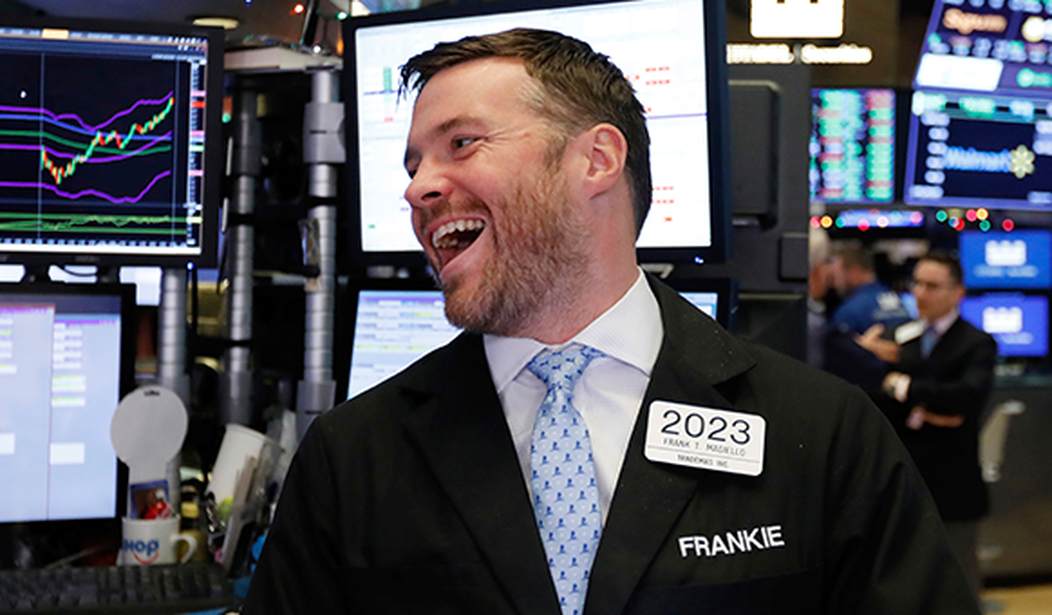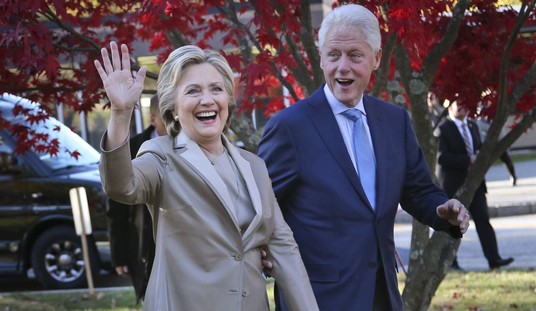
Trader Frank Masiello smiles as he works on the floor of the New York Stock Exchange before the closing bell, Wednesday, Dec. 26, 2018. The Dow closed up more than 1,000 points in the best day for Wall Street in 10 years as stocks rally back from Christmas Eve beating. (AP Photo/Richard Drew)
Fortune favors the bold.
James Woods announced on Twitter that he will be buying stocks today. Not only is it smart to do so, it shows that he believes in America. Woods wrote:
I invested a great part of my net worth in the market following the 9/11 Islamic terrorist attacks. I did it to support the economy of our nation regardless of the consequences. Patriotism was rewarded. I am once more investing in America, come what may.
Do I expect the market to be volatile? Yes, I do. Will it be for the faint of heart? No, it won’t. For the record I am not offering any advice nor any strategy regarding the stock market. I personally am buying because I believe in America, and I believe in this President.
In October 1987, I was a young financial consultant (retail broker) at Merrill Lynch in New York City. Following a week of daily losses, we watched in horror as the Dow Jones Industrial Average fell by 508 points (22.6%). Clients were calling and telling us to sell everything. The turmoil in our office, however, was blown away by the pandemonium on the floor of the NYSE on that day which has come to be known as Black Monday.
To put that in perspective, a 22.6% drop from the Dow’s recent all-time high of 29,551 reached on February 12, would shave 6,679 points off the Dow and take it to 22,872. Currently, it’s at 24,519.
(Note: The October 1987 plunge was the second-biggest percentage loss in stock market history. The NYSE closed in July 1914 when World War I began. When it reopened on December 12, 1914, it fell 24%, making that the largest percentage decline. The third greatest loss, 13%, occurred on Black Tuesday, October 24, 1929. However, when you take into account the drops over the next three days of trading culminating in Black Friday, it fell over 25%. This signaled the start of the Great Depression.)
The market had peaked in August 1987 at 2,746. So, from its August 25 peak to the lows reached intraday on Tuesday, October 20, the Dow had lost over 40% of its value.
It took the Dow over two years to return to its previous high. That said, if you had invested on Tuesday morning, October 20, 1987, when the Dow stood at 1,738 and sold on December 31, 1987, at 1,938, you would have made an 11.5% gain in two months.
(I distinctly remember hearing that businessman Donald Trump had anticipated the crash and was ready to buy on Tuesday morning.)
Even if you had bought before Black Monday and held through all the panics since then, including the post 9/11 downturn and the devastation caused by the financial crisis, you still would have made money.
Long before and ever since October 1987, we’ve endured devastating downturns. If you look at a longterm chart of the stock market, even those corrections and bear markets which feel so vicious while we’re going through them, eventually appear as little blips.
Although it’s difficult (or impossible) to time the market, it’s a good idea to buy stocks after the market’s been beaten up, especially if you have time to hold onto your position.
The overall trend of the U.S. stock market is up.
America has weathered worse storms than the Coronavirus or an oil price shock.
In the meantime, the stock market will fluctuate.
Disclaimer: Some fluctuations are more severe than others.













Join the conversation as a VIP Member